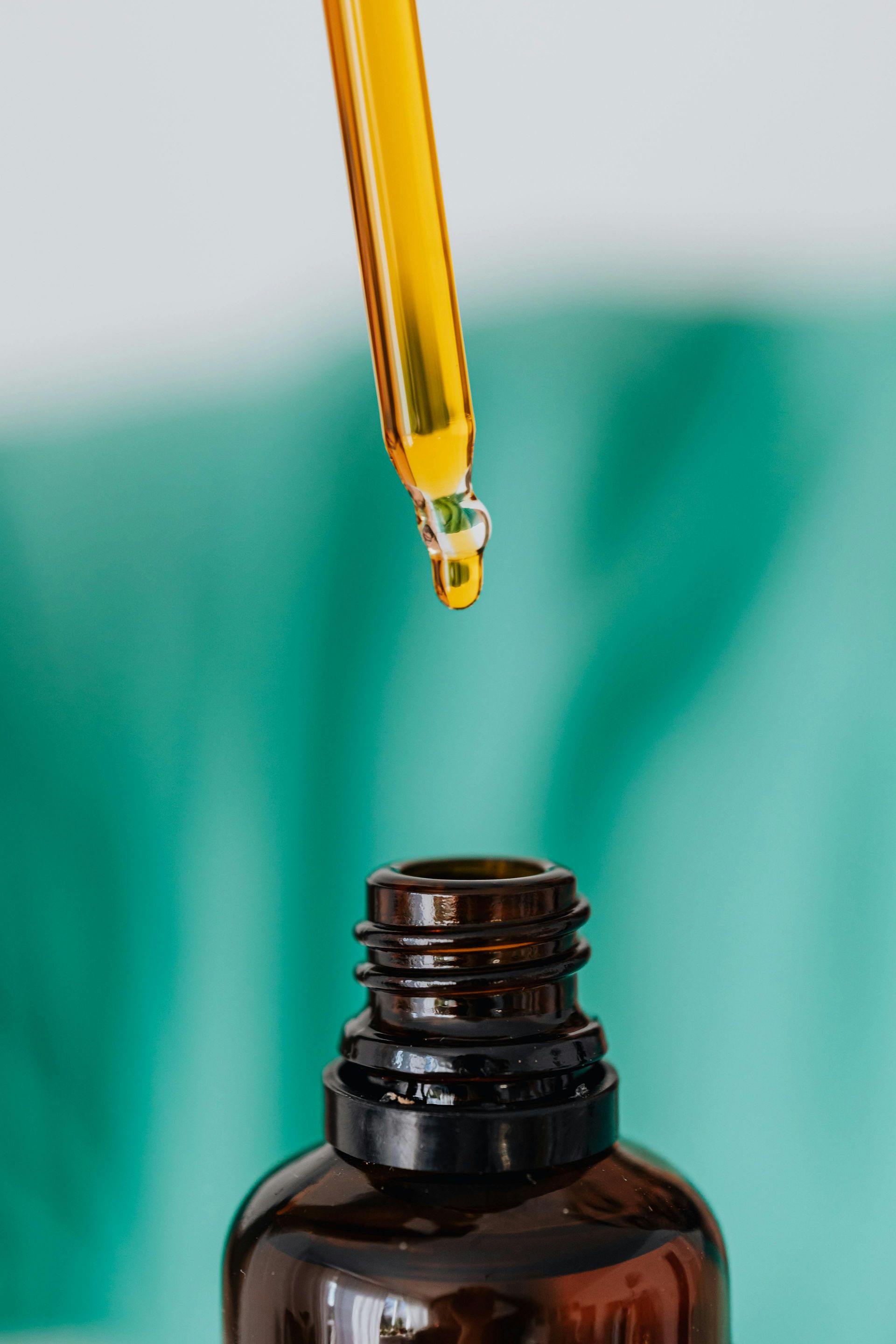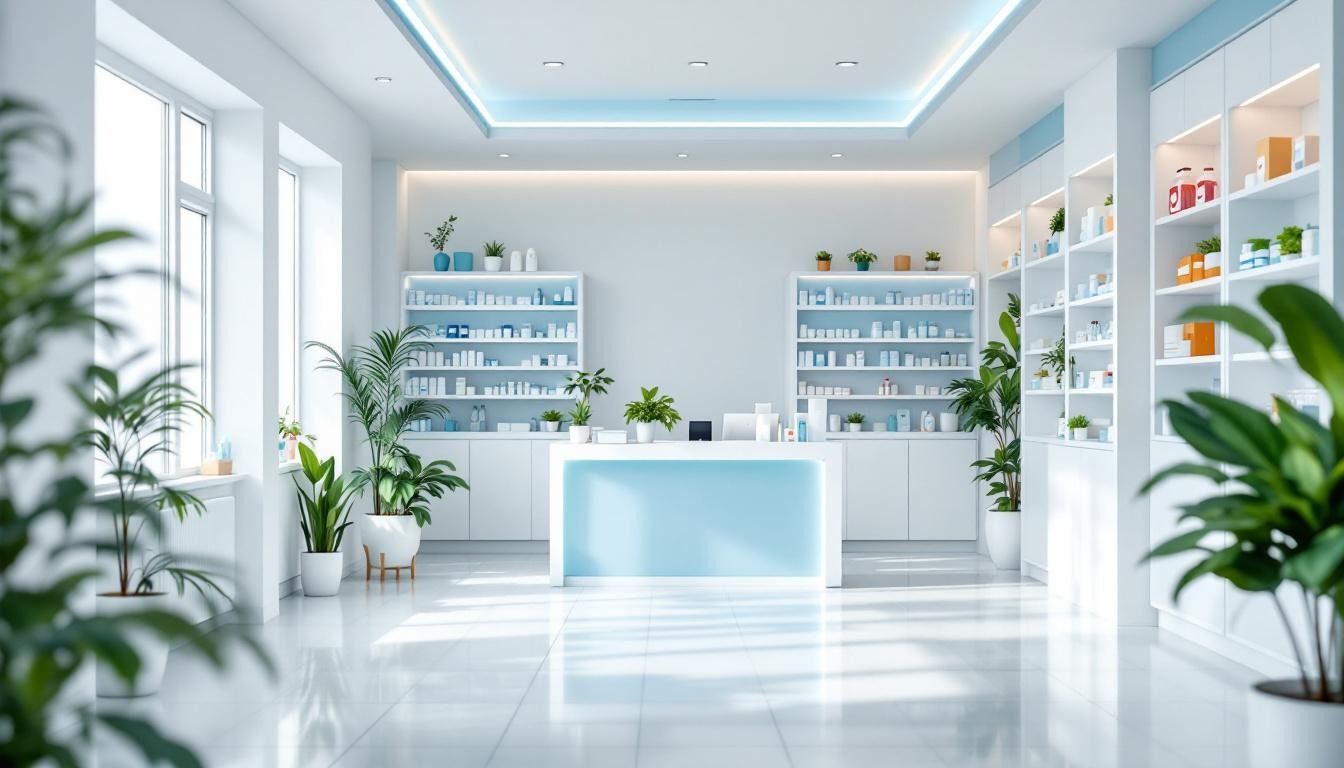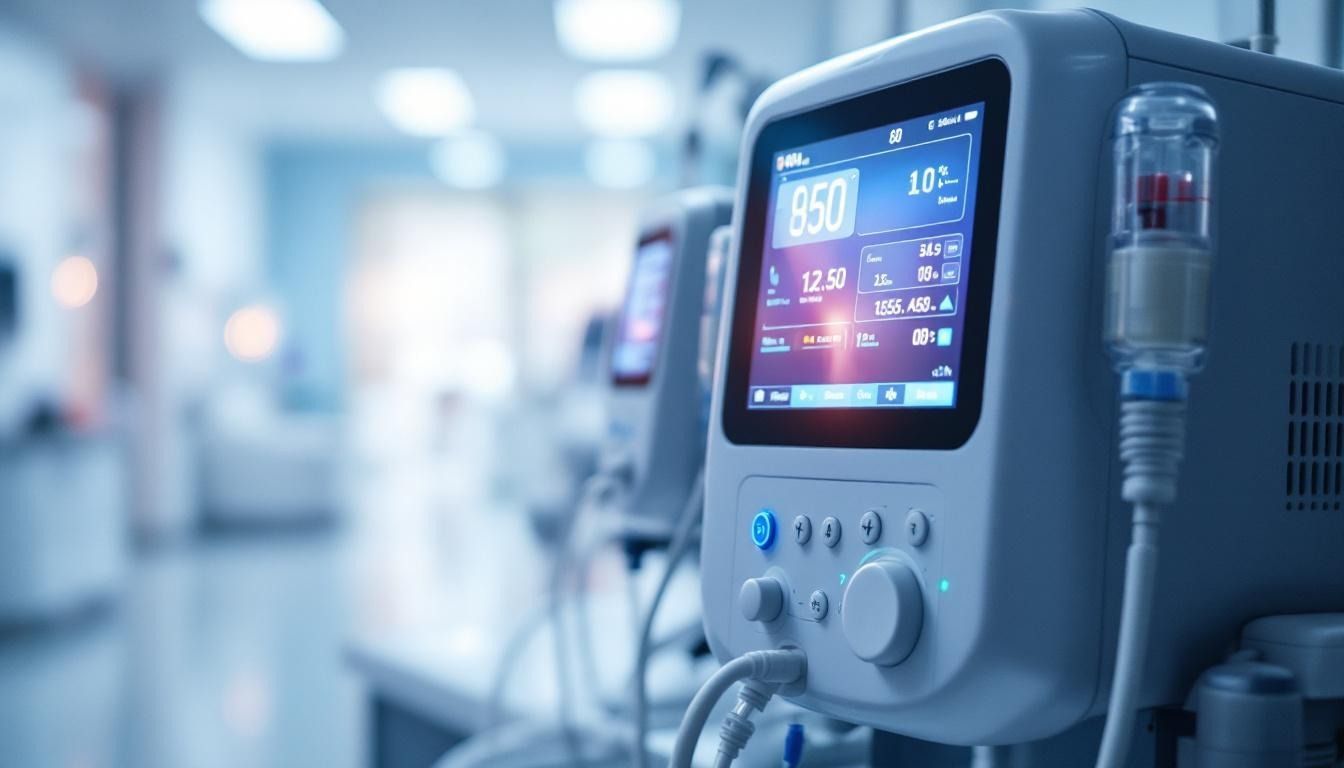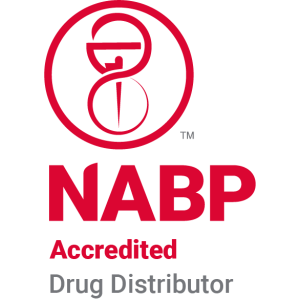How do sterile compounds enhance health outcomes?
Understanding the Critical Role of Sterile Compounds in Modern Healthcare
Sterile compounding is a cornerstone of personalized medicine, ensuring that medications administered directly into the body meet the highest standards of safety and efficacy. As healthcare continues to evolve with technology and rigorous safety regulations, sterile compounds play an increasingly vital role in patient outcomes, especially for vulnerable populations requiring injections, infusions, or other high-risk medications.
The Fundamentals of Sterile Compounding in Healthcare

What is the importance of sterile compounding in healthcare?
Sterile compounding is a fundamental aspect of modern healthcare, playing a vital role in ensuring patient safety. It involves preparing medications in a meticulously controlled, sterile environment to prevent any contamination that could cause infections or adverse health effects. This process is especially important for drugs administered through injections, infusions, or other invasive methods where sterility is crucial.
By adhering to strict aseptic techniques, using specialized equipment, and following established guidelines like USP 797, healthcare providers can significantly reduce the risk of contamination. Environmental monitoring and staff training further support this goal, maintaining high quality and safety standards.
Compounded sterile preparations (CSPs) are essential for creating customized medications tailored to individual patient needs, including altering drug strengths, forms, or removing allergens. This personalized approach ensures that vulnerable populations, such as children and critically ill adults, receive safe and effective treatments. Overall, sterile compounding safeguards health outcomes and maintains confidence in medical treatments.
Regulatory Standards and the Pursuit of Safety
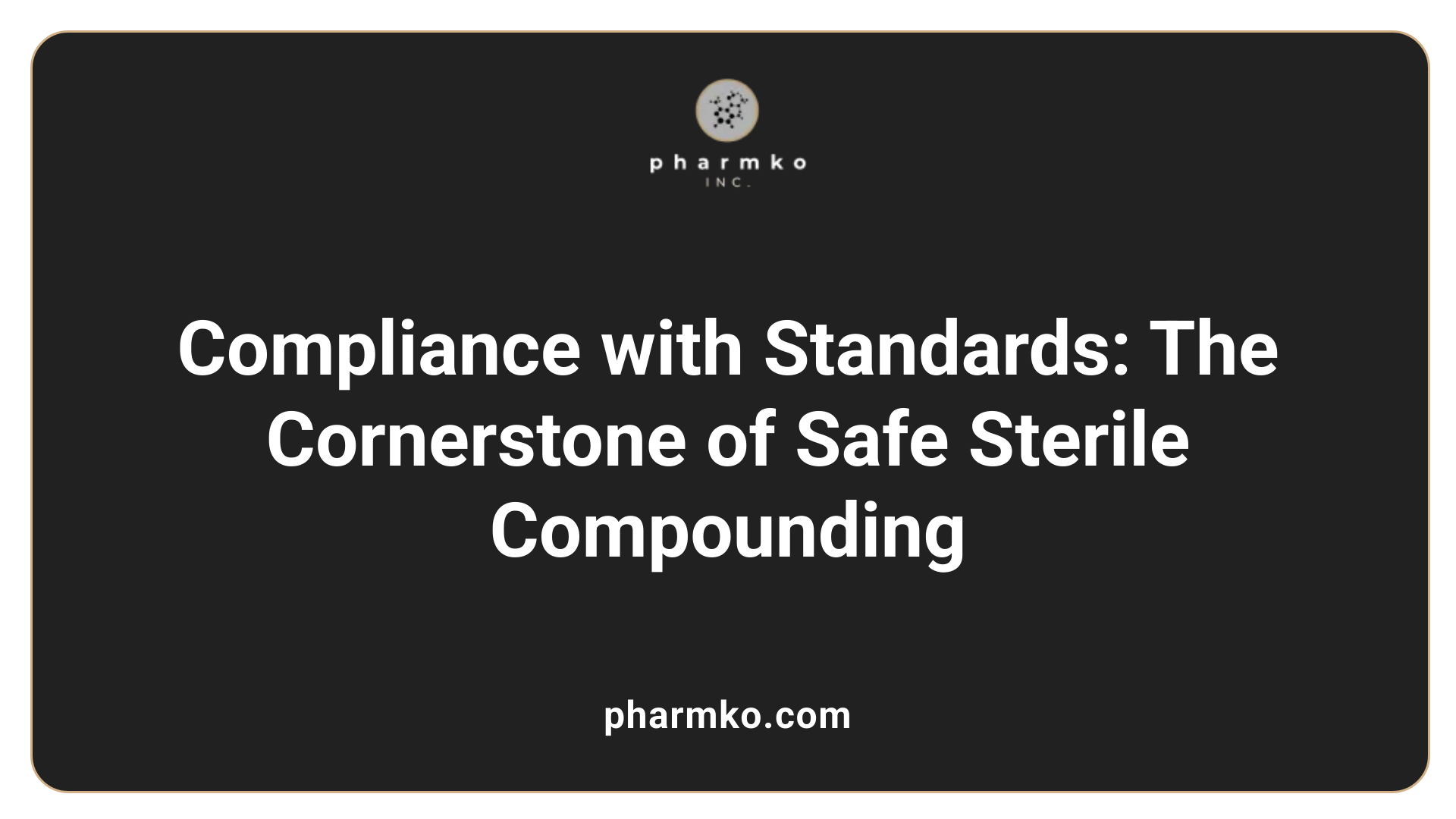
What are the key requirements for sterile compounding?
Sterile compounding, essential for preparing medications tailored to individual patient needs, revolves around strict safety and quality standards. The process is carried out in specially designed environments that minimize contamination.
Primarily, processes are performed within an ISO Class 5 environment, such as laminar airflow workbenches or biological safety cabinets, which are fitted with HEPA filters to ensure air purity. These areas are part of a larger cleanroom setup that includes buffer zones classified as ISO Class 7 and ante areas rated as ISO Class 8. Proper airflow and pressure controls in these zones prevent airborne contaminants from entering the sterile environment.
Personnel involved in compounding must undergo rigorous training in aseptic techniques, garbing procedures, and environmental monitoring. Regular competency assessments, including media-fill testing, are vital to confirm personnel can consistently maintain aseptic conditions.
The sterilization of equipment and surfaces is achieved through validated processes like autoclaving and surface disinfection. Continuous environmental monitoring, including air and surface sampling, helps detect microbial contamination early. This ongoing surveillance ensures that the environment remains within acceptable contamination limits.
Compliance with established standards is non-negotiable. Organizations like the United States Pharmacopeia (USP), The Joint Commission, and other regulatory agencies provide comprehensive guidelines—most notably, USP chapter 797—that define the minimum requirements for safe sterile compounding.
Adhering to these standards not only prevents contamination and medication errors but also ensures that compounded medications are safe, effective, and of high quality, ultimately safeguarding patient health in hospital and home healthcare settings.
| Regulatory Standard | Key Focus | Additional Details |
|---|---|---|
| USP 797 | Aseptic Technique & Environment | Sets detailed standards for cleanroom classification, personnel training, and cleaning protocols |
| The Joint Commission | Quality & Safety Standards | Accredits healthcare facilities and emphasizes compliance with medication safety protocols |
| FDA Regulations | Pharmaceutical Safety & Manufacturing | Oversees large compounding operations, enforces Good Manufacturing Practices (GMP) |
| DQSA (2013 Law) | Oversight & Compliance | Increased oversight following contamination outbreaks, mandates added safety measures |
In summary, the combination of strict environment controls, personnel expertise, routine monitoring, and adherence to authoritative standards forms the cornerstone of safe sterile compounding practices. This comprehensive approach reduces contamination risks, minimizes errors, and enhances positive health outcomes for patients.
Technological Advancements Improving Safety and Accuracy

What are the recent advancements and innovations in sterile compounding that improve health outcomes?
Recent developments in sterile compounding have brought notable improvements to patient safety and medication effectiveness. Automation plays a leading role, with robotic systems and automated compounding devices allowing precise measurement, mixing, and dispensing of medications. These systems significantly reduce human errors that can occur during manual preparation.
One of the most important innovations is the use of closed system transfer devices (CSTDs). These airtight systems minimize the risk of contamination and exposure to hazardous drugs, enhancing safety for both patients and pharmacy personnel.
Environmental monitoring has also evolved. Real-time sensors now continuously measure conditions such as temperature, humidity, air quality, and pressure within cleanroom environments. This proactive approach ensures that environmental parameters stay within acceptable limits, reducing the chance of microbial growth or particulate contamination.
Complementing these measures are advanced sterility testing methods. Rapid microbiological techniques, such as automated detection systems, provide quicker results without sacrificing accuracy. This allows for faster release of sterile products while maintaining strict standards.
Regulatory frameworks, including adherence to USP Chapter 797 standards and accreditation by organizations like PCAB, emphasize the importance of these technological advancements. These standards encourage the use of modern equipment and practices to uphold high safety and quality standards.
In addition, innovations like single-patient dose preparations, integrated with electronic health records and advanced software, maximize personalization. These approaches help reduce waste, lower medication errors, and improve patient adherence.
Collectively, these technological advancements—robotic automation, environmental sensors, rapid testing, and better packaging—have transformed sterile compounding. They enable safer, more accurate, and more effective medication preparation, ultimately leading to better health outcomes for patients.
Error Prevention and Safety Measures in Practice

How does sterile compounding enhance patient safety and treatment efficacy?
Sterile compounding plays a vital role in ensuring patients receive safe and effective medications. It minimizes the risks of microbial contamination by adhering to strict aseptic techniques and environmental controls, which are crucial for preventing infections. Customized formulations allow for precise dosage adjustments, allergen exclusion, and alternative delivery forms, closely matching each patient's unique needs. This personalization improves treatment adherence and outcomes.
Regulatory guidelines, such as those in USP Chapter 797 and USP 800, set mandatory standards that support quality compounding. These standards focus on maintaining sterility and reducing medication errors through comprehensive procedures and environmental monitoring.
In addition, the integration of advanced safety technologies, including barcode verification and automation systems, enhances error detection and process reliability. Regular environmental testing and staff competency assessments also contribute to a high standard of safety. Collectively, these practices make sterile compounding a cornerstone of modern, personalized healthcare, safeguarding patients from preventable complications and optimizing therapeutic results.
Use of barcode verification, environmental and personnel monitoring.
Barcode verification technology has become essential in sterile compounding. It enables meticulous checks of medication ingredients during preparation, reducing the likelihood of incorrect drug administration. By scanning barcodes at multiple stages, pharmacies verify ingredient identity, lot numbers, and expiration dates, ensuring accuracy and traceability.
Environmental monitoring, including viable and nonviable particle testing, evaluates the cleanliness of the compounding environment. Regular testing in controlled spaces such as ISO Class 5 cleanrooms detects airborne contamination, supporting compliance with safety standards. Personnel monitoring is equally important. Glove fingertip testing and media-fill tests assess aseptic techniques and personnel proficiency. These measures identify training needs and help maintain a consistently sterile environment.
Together, barcode verification and environmental monitoring create a robust safety net, catching potential errors early and preventing contamination, ultimately protecting patient health.
Staff training, competency assessments, and standardized protocols.
Comprehensive staff training forms the backbone of safe sterile compounding. Personnel must demonstrate proficient aseptic techniques through regular competency assessments, including glove fingertip tests and media-fill validations. These evaluations confirm that staff can reliably maintain sterile environments and handle hazardous drugs properly.
Developing and following detailed Standard Operating Procedures (SOPs) ensures consistency and safety. SOPs provide step-by-step instructions for every stage of the compounding process, from ingredient preparation to final labeling and storage. Strict adherence to SOPs minimizes variability and reduces human error.
Ongoing education and training updates are necessary to keep staff informed of evolving standards, new technologies, and best practices. This continual learning fosters a culture of safety and accountability within pharmacy teams, directly influencing patient outcomes positively.
Significance of proper labeling, storage, and transport.
Accurate labeling is essential in maintaining medication integrity. Labels must clearly indicate contents, concentration, patient details, preparation date, and expiration date. Incorrect or unclear labels risk medication errors and adverse events.
Proper storage conditions preserve the sterility, potency, and stability of compounded medications. Using standardized storage environments prevents microbial growth and degradation, especially during extended storage periods.
Transporting sterile preparations requires maintaining appropriate conditions, such as controlled temperature and secure packaging, to prevent contamination or deterioration en route to the patient or healthcare facility.
Implementing strict protocols and routine checks for labeling, storage, and transportation ensures the medication's safety and effectiveness throughout its lifecycle, upholding the highest standards of patient care.
Quality Monitoring and Environmental Control
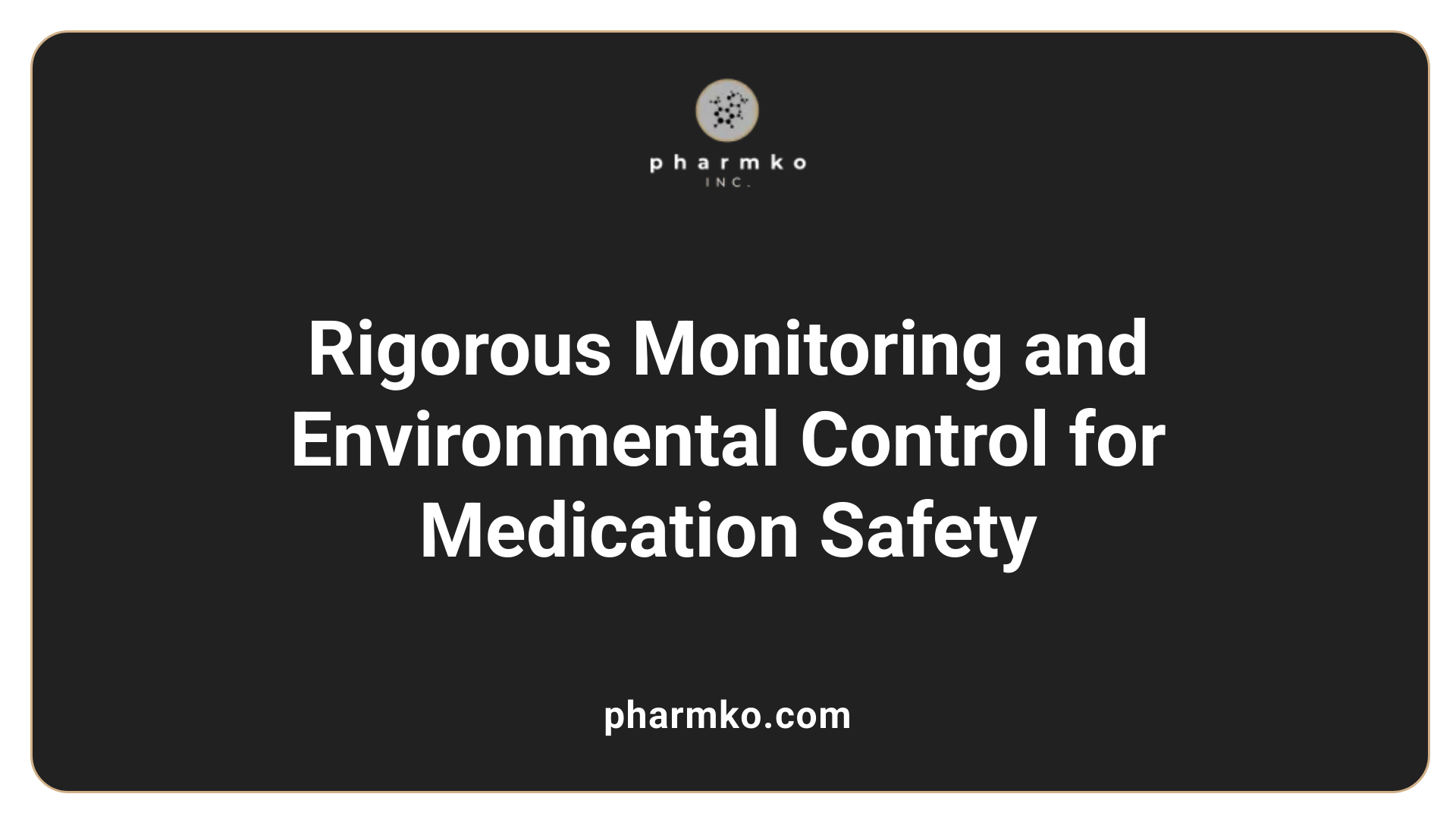
What is sterile medication used for?
Sterile medication is crucial for treatments that require a product free from bacteria, viruses, or other infectious microorganisms. These medications are used in procedures like injections, intravenous infusions, and eye drops, where the medication is directly introduced into the body or into specific tissues. To ensure safety, sterile compounding in hospital pharmacies involves preparing these drugs in a controlled environment.
Maintaining a clean, contamination-free environment is vital. This is achieved through stringent environmental and personnel monitoring practices that keep the air and surfaces within the sterile compounding areas free from harmful particles and microbes. Proper monitoring helps detect any deviations from acceptable contamination limits, preventing the risk of infections.
One of the key standards for environment quality is adhering to ISO class requirements. For sterile preparations, ISO Class 5 environments—such as laminar airflow workbenches and cleanrooms—are essential. These spaces use high-efficiency air filtration systems to minimize airborne contaminants, providing the ideal setting for aseptic compounding.
Regular environmental sampling, including testing for viable (living) and nonviable (particle) contaminants, helps verify that the cleanroom environment remains within safe operating limits. Surface sampling ensures cleanliness of work surfaces and equipment, reducing contamination risk.
Personnel monitoring is equally important. Hand and glove glove fingertip testing, along with media-fill simulations—collectively known as media-fill testing—are performed to evaluate personnel aseptic technique. These tests involve simulating the compounding process with culture media to identify potential sources of contamination from staff.
Implementing these rigorous monitoring protocols, alongside adherence to standards like USP Chapter 797, supports the creation of a safe environment. This continuous vigilance ensures the sterile preparations remain uncontaminated, ultimately safeguarding patient health and enhancing treatment outcomes.
| Monitoring Type | Purpose | Methods Used |
|---|---|---|
| Environmental Monitoring | Detect airborne microbial and particulate contamination | Viable and nonviable particle testing, air sampling |
| Surface Sampling | Ensure cleanliness of work surfaces and equipment | Swab tests, contact plates |
| Personnel Monitoring | Assess staff's aseptic technique and reduce contamination risk | Glove fingertip testing, media-fill tests |
| Environmental Standards | Maintain sterilization environments within ISO Class limits | Use of HEPA filters, controlled airflow systems |
Adhering to these quality control practices guarantees that sterile preparations are safe for patient use, reducing infection risks, and contributing to improved health outcomes.
Personnel Competency and Standard Operating Procedures
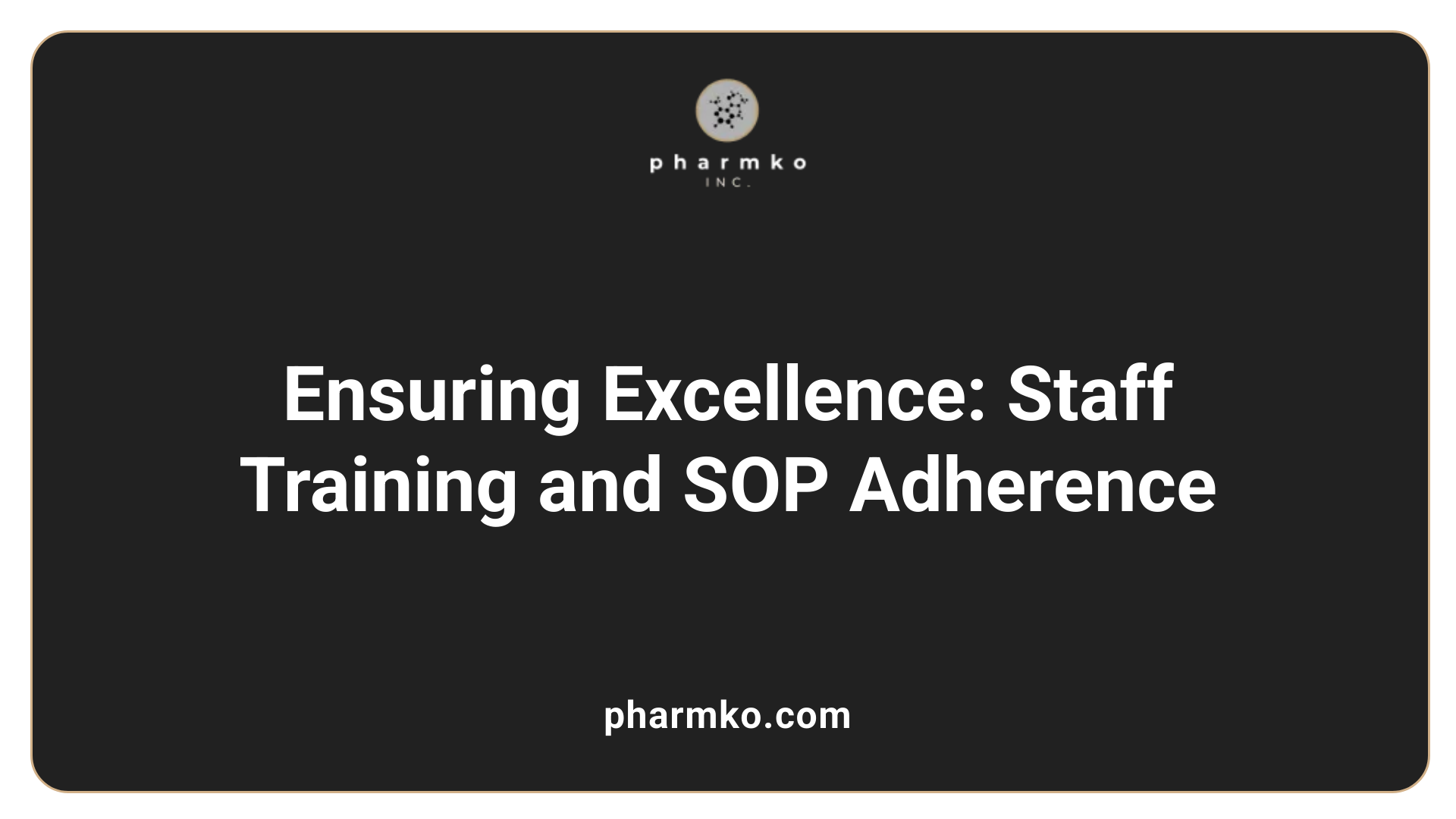
What is sterile medication used for?
Sterile medications are crucial in hospital and healthcare settings when preparing treatments that must be free of microorganisms. These preparations are primarily used in injections, intravenous infusions, ophthalmic solutions, and other invasive procedures where contamination could lead to severe infections.
Compounding sterile preparations involves meticulous processes within controlled environments, such as clean rooms equipped with specialized equipment and air filtration systems. Ensuring sterility helps prevent infections, particularly in vulnerable patient populations like children, the elderly, or those with compromised immune systems.
The preparation of these medications requires strict aseptic techniques and adherence to certified practices. This reduces the risk of microbial contamination, which could cause serious adverse reactions or fatal outcomes. Overall, sterile medications serve as essential therapeutic tools in ensuring patient safety and effective treatment in critical care situations.
How do personnel training and SOPs contribute to safety?
Training staff effectively in aseptic techniques is fundamental for maintaining high standards in sterile compounding. This begins with thorough education on aseptic procedures, proper hand hygiene, glove use, and environmental controls.
Regular assessments, such as media-fill testing—which simulates the compounding process using nutrient-rich media to check for microbial growth—are used to evaluate personnel competency. These tests help verify that staff can consistently perform procedures without contaminating sterile products.
Developing detailed Standard Operating Procedures (SOPs) ensures consistency and safety, guiding staff through every step of the compounding process from ingredient verification to final labeling. Following SOPs minimizes errors, enhances reproducibility, and supports regulatory compliance.
Routine evaluation and ongoing training are vital, as they promote continuous improvement and adapt to evolving standards. This focus on competency helps reduce contamination risks, leading to safer medications and better health outcomes for patients.
| Key Aspects | Details | Purpose |
|---|---|---|
| Aseptic Technique Training | Hands-on learning, media-fill testing, glove fingertip tests | Ensures staff can maintain sterile environments |
| SOP Development | Clear, detailed procedures | Provides consistent guidance for sterile compounding |
| Competency Assessments | Regular testing, evaluations | Verifies ongoing staff proficiency |
By combining rigorous training with standardized procedures, healthcare facilities can significantly enhance the quality and safety of sterile preparations, ultimately protecting patient health.
Storage, Labeling, and Quality Assurance for Optimal Outcomes
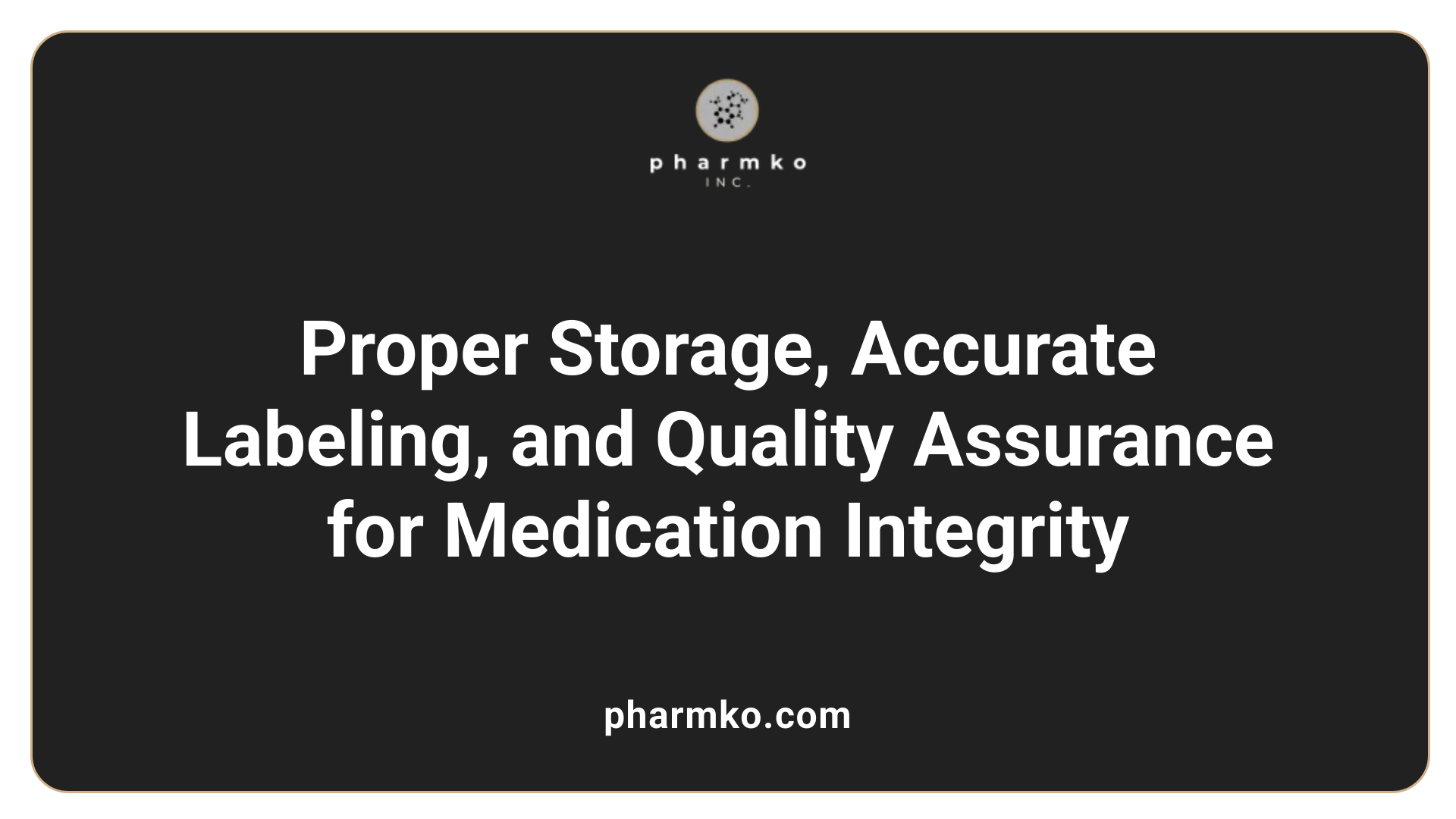
What is sterile medication used for?
Sterile medication is essential in scenarios where the medication must be free from bacteria, viruses, and other infectious microorganisms. These preparations are crucial for injections, intravenous infusions, and eye treatments, where the drug is delivered directly into the body.
The process of sterile compounding involves preparing these medications in a clean-room environment, following strict aseptic techniques. Specialized equipment and meticulous procedures help maintain high air quality and prevent contamination.
Proper management of sterile medications—through correct storage, accurate labeling, and ongoing quality assurance—is vital for ensuring that these drugs remain effective and safe for patient use. Beyond initial preparation, maintaining optimal conditions throughout storage and transport reduces the risk of microbial growth or drug degradation.
Proper storage and transport practices.
Sterile preparations must be stored in environments that prevent contamination and preserve their stability. This often involves controlled temperature and humidity, as specified in their stability data. Many facilities utilize refrigerators or freezers with temperature monitoring systems to ensure consistent conditions.
Transporting sterile medications requires secure, temperature-controlled packaging to avoid fluctuations that could compromise drug integrity. Continuous monitoring during transit helps detect any issues early, preventing compromised medications from reaching patients.
Labels and documentation ensuring traceability.
Accurate labeling and comprehensive documentation are critical in sterile compounding to ensure traceability. Labels should include details like drug name, concentration, lot number, preparation date, expiration date, and storage conditions.
These records support tracking of each batch from preparation through distribution, facilitating quick action if contamination or errors are identified. Clear traceability helps in managing recalls, investigating incidents, and complying with regulations such as USP chapter 797.
Role of incident tracking and corrective actions.
Maintaining a robust quality assurance program involves systematically tracking incidents, such as contamination events, deviations from SOPs, or labeling errors. Regular audits and environmental monitoring help identify areas needing improvement.
When errors or contamination are detected, prompt corrective actions—like retraining personnel, revising SOPs, or enhancing environmental controls—are essential. This proactive approach minimizes recurrence risks and protects patient safety.
| Aspect | Description | Additional Notes |
|---|---|---|
| Storage practices | Maintain controlled environment | Temperature, humidity monitoring |
| Labeling | Accurate, detailed labels | Batch info, expiration |
| Traceability | Complete documentation | Lot numbers, logs |
| Incident management | Tracking and correcting errors | Root cause analysis |
Adherence to these practices ensures the integrity of sterile compounds, safeguarding their efficacy and ultimately leading to better health outcomes for patients.
Incorporating Sterile Compounding into Comprehensive Patient Care
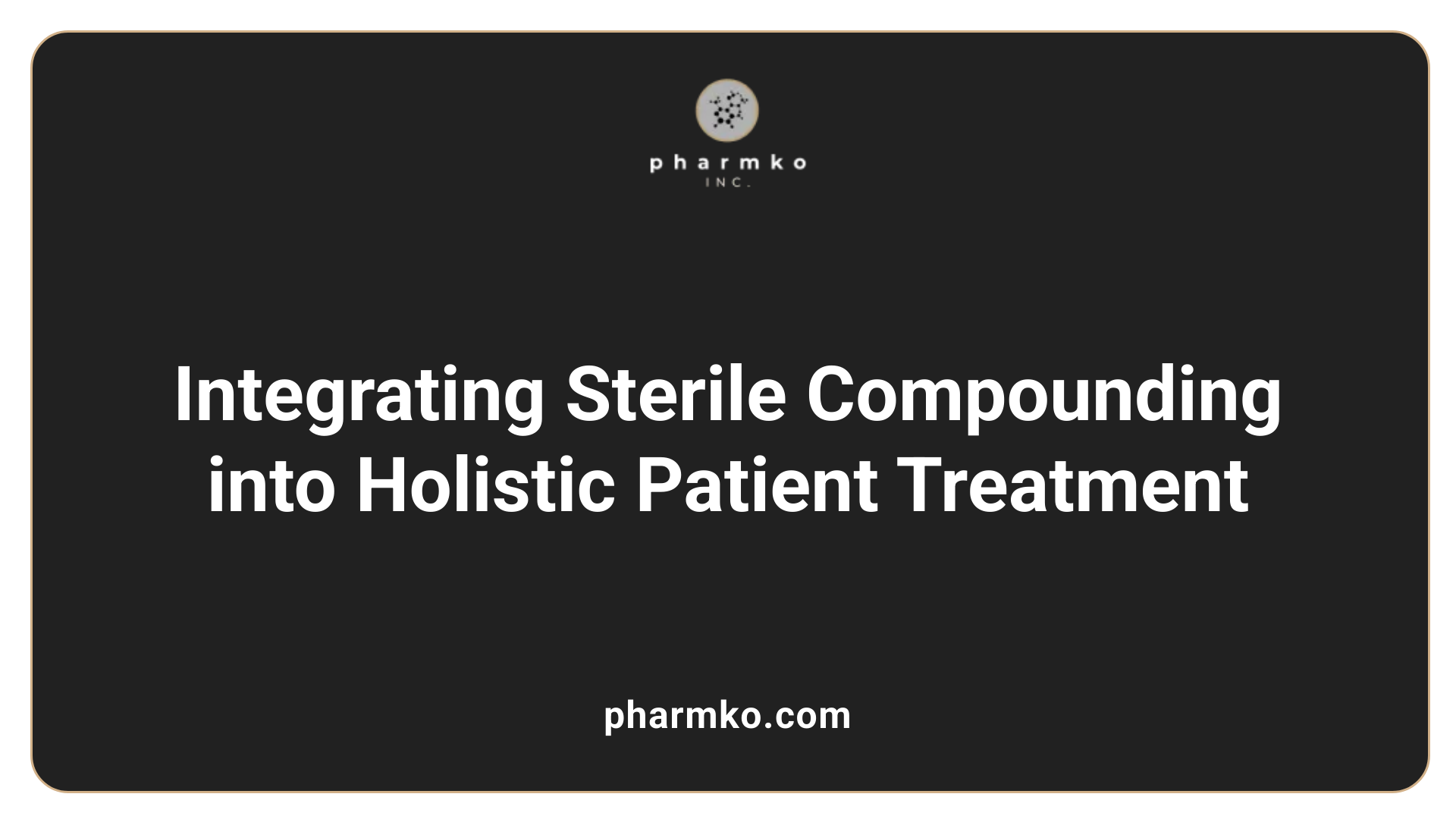
What are the recent advancements and innovations in sterile compounding that improve health outcomes?
Recent innovations have transformed sterile compounding into a safer, more precise process that directly benefits patient health. Automation technologies such as robotic systems and automated compounding devices increase accuracy in measurement and mixing, reducing manual errors.
Closed System Transfer Devices (CSTDs) help maintain airtight environments during drug transfers, significantly lowering contamination risks. Real-time environmental monitoring systems continuously track parameters like temperature, humidity, and air quality, allowing for prompt corrective actions if needed.
Advances in sterility testing, including rapid microbiological methods, provide faster results without compromising accuracy, enabling quicker release of sterile products. Strict adherence to updated USP guidelines and accreditation standards further promotes high-quality practices.
Innovations such as preparing medications as single-patient doses, complete electronic documentation, and detailed tracking improve medication safety and personalized treatment. These advances lead to medications that are more tailored, effective, and safer, ultimately enhancing patient outcomes.
Overall, technological improvements coupled with strict regulatory compliance ensure sterile compounds maintain their quality, safety, and efficacy, playing a crucial role in advancing healthcare delivery.
Elevating Patient Safety Through Continuous Innovation and Standards
The advancement of sterile compounding practices, guided by rigorous standards, innovative technologies, and ongoing personnel training, has transformed patient care. By reducing contamination risks, minimizing errors, and enabling personalized medication formulations, sterile compounds continue to significantly improve health outcomes. Regulations like USP 797 and technological innovations such as robotics and real-time environmental monitoring ensure that compounded sterile preparations meet the highest safety and quality standards. These continuous improvements underscore the importance of maintaining strict oversight, investing in emerging technologies, and fostering a culture of safety to sustain the positive impact of sterile compounds on patient health across healthcare settings.
References
- Implementation of safety standards of compounded sterile ...
- ASHP Guidelines on Compounding Sterile Preparations
- Future Trends, Innovations And Predictions In Sterile ...
- How Can Custom Compounding Enhance Health Outcomes?
- Impact of technology-assisted versus manual sterile ...
- How sterile compounding has evolved and actions taken
- Ensuring Patient Safety in Compounding of Medicines
- The Evolution of Compounding Pharmacies: Safety and ...
- ASHP Guidelines on Compounding Sterile Preparations
- Sterile Compounding



